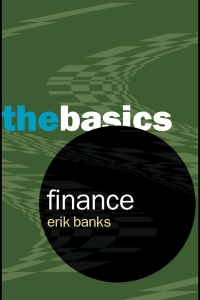
TB MC Qu. 08-55 A flexible budget performance report... A flexible budget performance report compares the differences between: Multiple Choice 0 Actual performance and budgeted performance based on actual sales volume. 0 Actual performance over several periods. 0 Budgeted performance over several periods. 0 Actual performance and budgeted performance based on budgeted sales volume 0 Actual performance and standard costs at the budgeted sales volume. Tuy De prepareu. A flexible budget may be prepared: Multiple Choice Before the operating period only. After the operating period only. During the operating period only. At any time in the planning period. Only when the company encounters excessive costs. - then , and drag to the Favorites Bar folder. Or import from another browser. Import favorites Saved TB MC Qu. 08-119 The overhead cost variance is... The overhead cost variance is calculated as: Multiple Choice o o Standard applied overhead less budgeted overhead. Actual overhead incurred less standard overhead applied, o Budgeted overhead less standard overhead applied. o Actual overhead incurred less standard applied overhead. o Actual fixed cost less budgeted overhead - then , and drag to the Favorites Bar folder. Or import from another browser. Import favorites Saved TB MC Qu. 08-119 The overhead cost variance is... The overhead cost variance is calculated as: Multiple Choice o o Standard applied overhead less budgeted overhead. Actual overhead incurred less standard overhead applied, o Budgeted overhead less standard overhead applied. o Actual overhead incurred less standard applied overhead. o Actual fixed cost less budgeted overhead Help Save &falt TB MC Qu. 08-113 A company's flexible budget... A company's flexible budget for the range of 35.000 units to 45,000 units of production showed variable overhead costs of $2 per unit and fixed overhead costs of $72.000. The company incurred total overhead costs of $148 800 while operating at a volume of 40,000 units. The total controllable cost variance is: Multiple Choice $6.500 favorable $6,800 unfavorable 63200 O $3.200 urtavorable 4 . TB MC Qu. 08-75 Based on a predicted level of production... Help Save Based on a predicted level of production and sales of 30,000 units, a company anticipates total contribution margin of $105,000, fixed costs of $40,000, and operating income of $65,000. Based on this information, the budgeted operating income for 28,000 units would be TB MC Qu. 08-75 Based on a predicted level of production... Help Save Based on a predicted level of production and sales of 30,000 units, a company anticipates total contribution margin of $105,000, fixed costs of $40,000, and operating income of $65,000. Based on this information, the budgeted operating income for 28,000 units would be TB MC Qu. 08-99 The standard materials cost to produce... Help Sve The standard materials cost to produce unit of Product Ris 6 pounds of material at a standard price of $50 per pound. In manufacturing 8,000 units, 47,000 pounds of material wore used at a cost of $51 per pound. What is the direct materiais quantity variance? Murple Choice O $47.000 unfavorable 0 $47.000 favorable $50.000 unfavorable Oo oo oo 50.000 favorable $3000 favorable Help Save & alt TB MC Qu. 08-96 A job was budgeted to require... A job was budgeted to require 3 hours of labor por unit at $1200 per hour. The job consisted of 8,000 units and was completed in 22.000 hours at a total tabor cost of $269,500. What is the direct labor efficiency variance? Multiple Choice $27.500 unitaroatio. $22.000 unfavorable O $15.000 unfavorable 322.000 tworabic. $6.000 unfavorable TB MC Qu. 08-109 The overhead cost variance... he overhead cost variance is: C) The difference between the overhead costs actually incurred and the overhead budgeted at the actual operating level. 0 The difference between the actual overhead incurred during a period and the standard overhead applied 0 The difference between actual and budgeted cost caused by the difference between the actual price per unit and the budgeted price per unit 0 The costs that should be incurred under normal conditions to produce a specific product or component) or to perform a specific service. 0 The difference between the total overhead cost that would have been expected if the actual operating volume had been accurately predicted and the amount of overhead cost that was allocated to products using the standard overhead rate. Pre




























